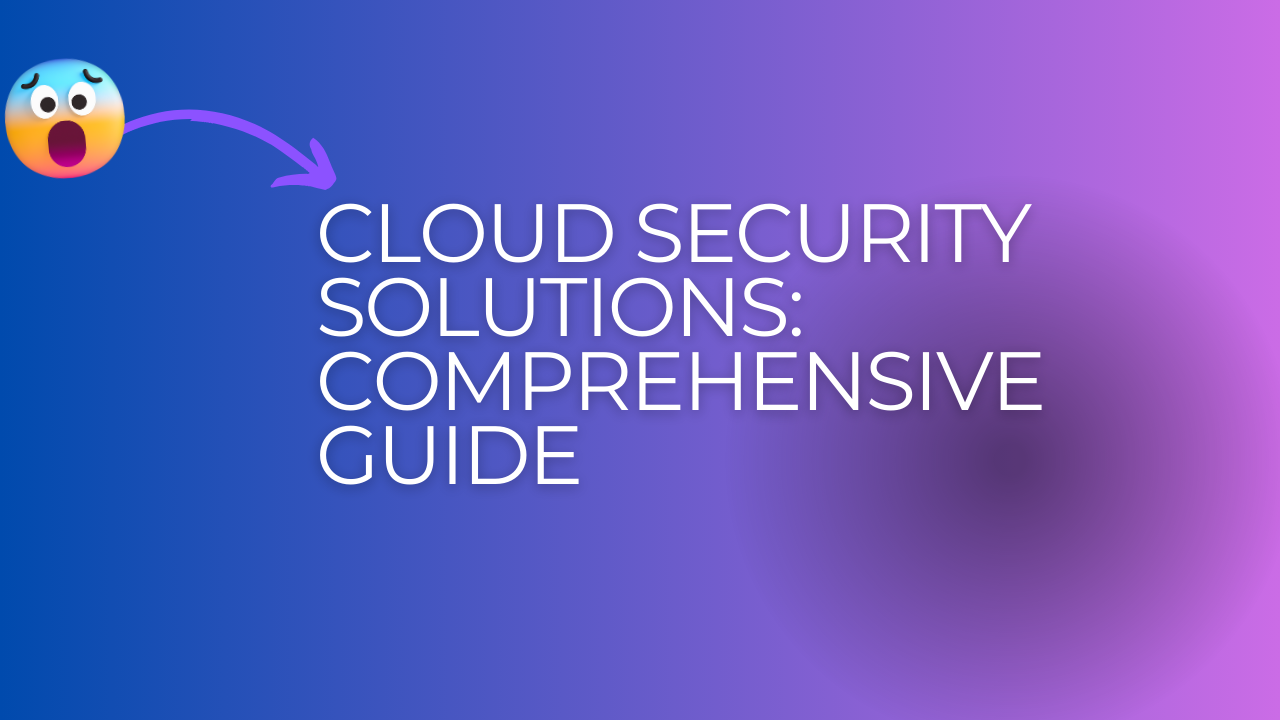Introduction
What is Cloud Security?
Cloud security refers to the technologies, policies, and services used to protect data, applications, and infrastructure associated with cloud computing. It encompasses a range of measures designed to safeguard against cyber threats and ensure the integrity, confidentiality, and availability of cloud-based resources.
Importance of Cloud Security
As businesses increasingly migrate to the cloud, securing their digital assets becomes paramount. Cloud security is crucial for protecting sensitive data, maintaining customer trust, and complying with regulatory requirements. Without robust cloud security, organizations risk data breaches, financial losses, and reputational damage.
Evolution of Cloud Security
Cloud security has evolved significantly over the past decade. Initially focused on perimeter defenses, it has shifted towards more sophisticated approaches like zero trust, where trust is never assumed and always verified. Advances in encryption, identity management, and artificial intelligence have further bolstered cloud security capabilities.
Technical Specifications
Security Protocols in Cloud Computing
Cloud security protocols ensure secure communication between cloud services and users. Key protocols include Secure Socket Layer (SSL), Transport Layer Security (TLS), and Hypertext Transfer Protocol Secure (HTTPS). These protocols encrypt data in transit, preventing interception and tampering.
Encryption Standards
Encryption is fundamental to cloud security. Advanced Encryption Standard (AES) and Rivest-Shamir-Adleman (RSA) are commonly used to protect data at rest and in transit. End-to-end encryption ensures that data remains secure from the point of origin to its destination.
Access Control Mechanisms
Access control mechanisms regulate who can access cloud resources. Role-based access control (RBAC) and attribute-based access control (ABAC) are widely used. These mechanisms enforce policies that restrict access based on user roles or attributes, minimizing the risk of unauthorized access.
Cloud Security Architecture
A well-designed cloud security architecture integrates various security measures into a cohesive framework. Key components include identity and access management (IAM), data encryption, network security, and security information and event management (SIEM). This architecture ensures comprehensive protection across the cloud environment.
Applications
Cloud Security in Healthcare
In healthcare, cloud security is vital for protecting patient data and complying with regulations like HIPAA. Secure cloud solutions enable healthcare providers to store and share medical records safely, facilitating better patient care while safeguarding privacy.
Cloud Security in Finance
Financial institutions use cloud security to protect sensitive financial data and transactions. Compliance with standards such as PCI DSS and ensuring robust encryption and access controls are essential for preventing fraud and maintaining customer trust.
Cloud Security in Education
Educational institutions leverage cloud security to protect student information and academic resources. Secure cloud solutions support online learning platforms and administrative functions, ensuring data privacy and compliance with educational standards.
Cloud Security in E-commerce
E-commerce platforms rely on cloud security to protect customer data, transaction details, and inventory information. Implementing robust security measures helps prevent data breaches, fraud, and ensures a secure shopping experience for customers.
Cloud Security for Government Agencies
Government agencies require stringent cloud security measures to protect sensitive information and national security data. Compliance with regulations and the implementation of advanced security protocols ensure that government operations remain secure and resilient against cyber threats.
Benefits
Improved Data Protection
Cloud security provides advanced tools and techniques for protecting data against breaches and leaks. Encryption, access controls, and continuous monitoring help safeguard data integrity and confidentiality.
Enhanced Compliance
Cloud security solutions assist organizations in meeting regulatory requirements by providing features like encryption, access controls, and audit logs. This ensures compliance with laws such as GDPR, HIPAA, and PCI DSS.
Cost Efficiency
Cloud security eliminates the need for extensive on-premises security infrastructure, reducing capital expenditures. Pay-as-you-go models and scalability further enhance cost efficiency, allowing businesses to allocate resources more effectively.
Scalability and Flexibility
Cloud security solutions can scale with the growth of an organization, providing consistent protection across expanding cloud environments. This flexibility ensures that security measures adapt to evolving business needs and threats.
Business Continuity
Cloud security supports business continuity by ensuring that data and applications remain available and secure during disruptions. Disaster recovery solutions and redundant systems minimize downtime and data loss.
Challenges and Limitations
Data Breaches and Cyber Attacks
Despite advanced security measures, cloud environments are still vulnerable to data breaches and cyber attacks. Continuous monitoring, threat detection, and incident response are critical for mitigating these risks.
Compliance Issues
Maintaining compliance in a dynamic cloud environment can be challenging. Organizations must stay updated with changing regulations and ensure that their cloud security measures align with compliance requirements.
Data Sovereignty Concerns
Data sovereignty issues arise when data is stored in different countries with varying data protection laws. Organizations must navigate these complexities to ensure that their data remains secure and compliant with local regulations.
Complexity of Management
Managing cloud security can be complex, especially in multi-cloud environments. Integrating and coordinating various security measures across different platforms requires specialized knowledge and expertise.
Vendor Lock-In
Relying heavily on a single cloud provider can lead to vendor lock-in, limiting flexibility and increasing dependency. Diversifying cloud providers and adopting interoperable security solutions can mitigate this risk.
Latest Innovations
AI and Machine Learning in Cloud Security
Artificial intelligence and machine learning enhance cloud security by automating threat detection and response. These technologies analyze vast amounts of data to identify anomalies and potential threats, improving overall security posture.
Zero Trust Security Models
Zero trust security models assume that no user or device is inherently trustworthy. Continuous verification and strict access controls ensure that only authorized users can access cloud resources, reducing the risk of breaches.
